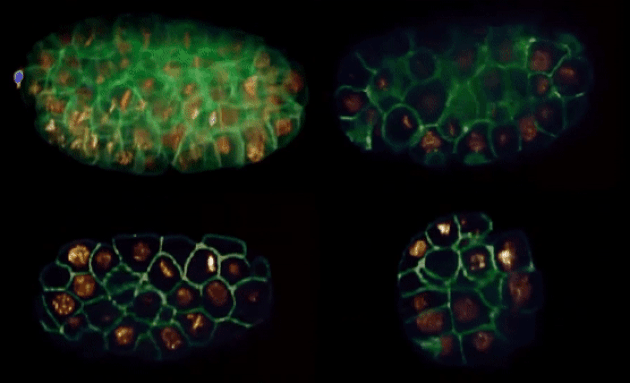New grant to CFIM will shed light on how cells organise
The Core Facility for Integrated Microscopy has received DKK 14.97 million from the Novo Nordisk Foundation for 'BioDEEP' microscopy equipment, which makes it possible to study how cells organise themselves and move within, for example, embryos or organs.
 A lot of researchers from the Faculty of Health and Medical Sciences strive to understand still more functions in the human body in order to prevent and fight disease. For this it is a great advantage to be able to visualize cells behavior inside different types of tissues and organs – being able to follow multicellular biological processes in vivo or in situ.
A lot of researchers from the Faculty of Health and Medical Sciences strive to understand still more functions in the human body in order to prevent and fight disease. For this it is a great advantage to be able to visualize cells behavior inside different types of tissues and organs – being able to follow multicellular biological processes in vivo or in situ.
Fortunately, this is now made possible by the faculty's Core Facility for Integrated Microscopy (CFIM), which with support from the Novo Nordisk Foundation will receive two Selective Plane Illumination microscopes (SPIM) this autumn!
With them you will be able to capture 3D images deep inside living tissue and high-resolution 3D images of the organization of cells throughout organs and organisms.
With them you will be able to capture 3D images deep inside living tissue and high-resolution 3D images of the organization of cells throughout organs and organisms . This could e.g. be a zebrafish, a mouse, a kidney, an embryo or a tumour.
"SPIM will greatly improve our imaging portfolio for physiological and embryological research. I am looking forward to show to our users all the new possibilities BioDEEP will bring" says Associate Professor Clara Prats Gavalda, Head of Light Microscopy at CFIM, who has led the application to the Novo Nordisk Foundation.
Microscopy experts and tailored software
The two microscopes will both generate huge data sets. That's why advanced software and hardware for transferring, processing, visualizing, and analyzing SPIM data are also included in the BioDEEP infrastructure.
In addition a SPIM CFIM expert will be available to ensure that interested researchers can benefit from the best possible use of the new equipment. You are already now very welcome to get in touch and hear about the concrete possibilities of using BioDEEP microscopy in your research. Researchers outside the KU also have the option to book into the facility.
